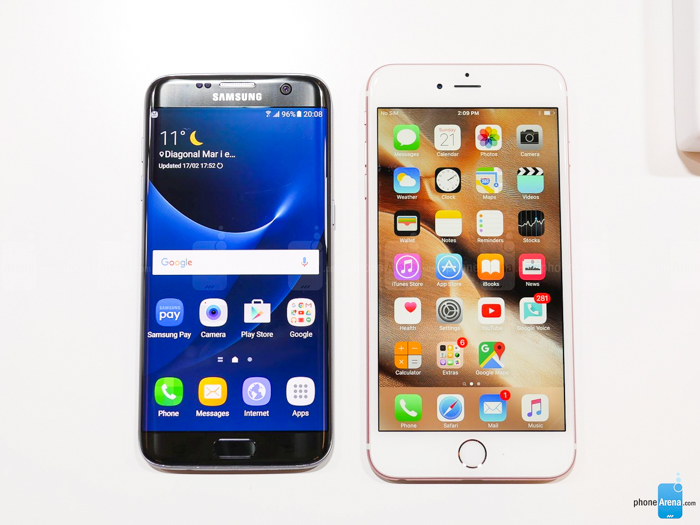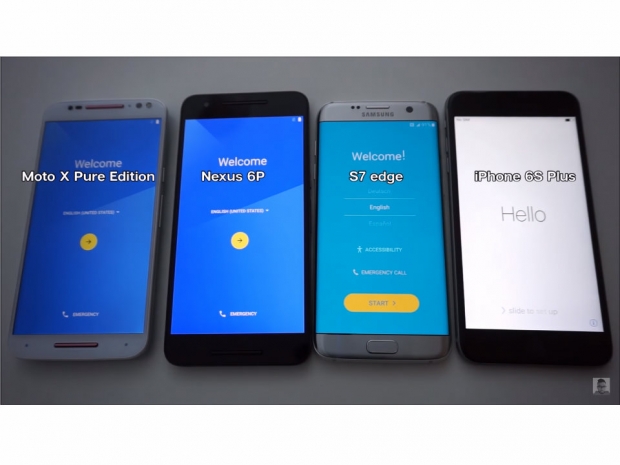YouTube user Jerome Ortega takes credit for running a performance test across four recent flagship smartphone devices – the Moto X Pure Edition (September 2015), the Nexus 6P (September 2015) iPhone 6S Plus (September 2015) and upcoming Samsung Galaxy S7 Edge (March 2016).
All four devices tested were running freshly installed operating systems (iOS 9.2.1 and Android 6.0.1 Marshmallow) without SIM cards and each device contained the same installed applications. The YouTube video experiment was designed to measure performance by running a sequence of apps in the same order and timing the outcomes of each device.

Samsung Galaxy S7 Edge (Qualcomm Snapdragon 820 quad-core SoC) vs Apple iPhone 6S Plus (Apple A9 dual-core SoC)
Apple's A9 versus Qualcomm's Snapdragon 820, 810 and 808
The Samsung Galaxy S7 Edge (Snapdragon 820 Edition) features a 5.5-inch AMOLED display with a 2560x1440p resolution and uses Qualcomm’s MSM8996 (Snapdragon 820) dual-core 2.15GHz + dual-core 1.60GHz Kryo SoC, 624MHz Adreno 530 graphics and 4GB of LPDDR4 RAM. Meanwhile, the iPhone 6S Plus features a 5.5-inch 1080p display but renders at an internal resolution of 2208x1242 and downscales back to 1920x1080p to fit the display. The Apple flagship device uses the company’s custom dual-core 1.85GHz 64-bit A9 SoC based on ARMv8-A “Twister,” six-core 450MHz PowerVR GT7600 graphics, and 2GB of LPDDR4 RAM. The Google Nexus 6P features a 5.7-inch AMOLED display with a 2560x1440p resolution and uses Qualcomm’s MSM8994 octa-core 2.0GHz SoC (Snapdragon 810), 600MHz Adreno 430 graphics and 3GB of LPDDR4 RAM. Likewise, the Moto X Pure Edition also features a 5.7-inch display with a 2560x1440p resolution and uses Qualcomm’s MSM8992 six-core 1.80GHz SoC (Snapdragon 808), 600MHz Adreno 418 graphics and 3GB of LPDDR3 RAM.
The test results show the iPhone 6S Plus outperforming the Galaxy S7 Edge in UI speed, while the Nexus 6P comes very close and possibly matches the Galaxy S7 Edge in UI speed and the Moto X Pure Edition comes in fourth place.
In this test, the iPhone 6S Plus ran through the entire app test cycle with 17 seconds to spare compared to the slower Galaxy S7 Edge. However, benchmarks from Sunday have shown Qualcomm’s quad-core Snapdragon 820 outperforms Apple’s dual-core A9 in the AnTuTu benchmark’s average scores of both CPU (136,383 points vs. 132,657 points) and GPU (55,098 points vs. 39,104 points).




